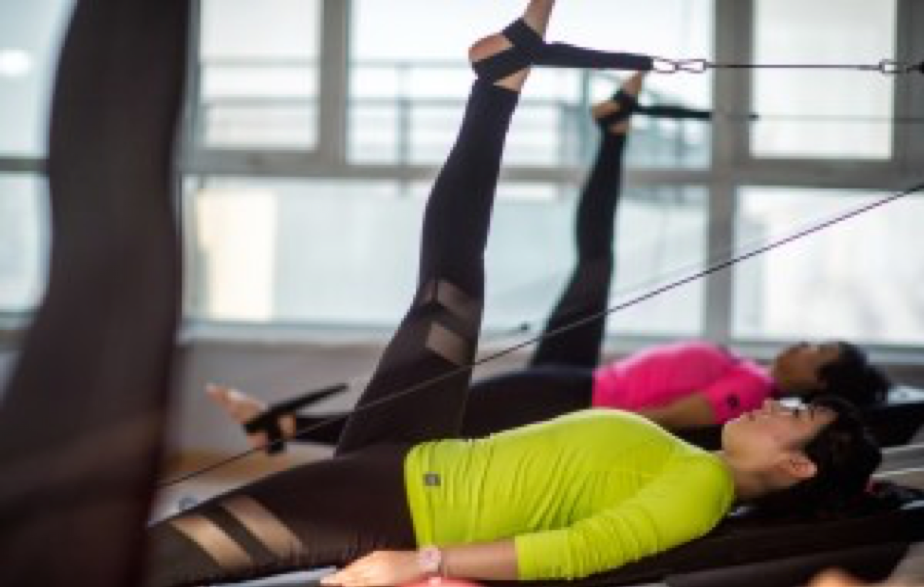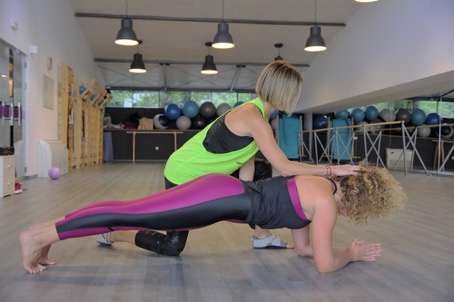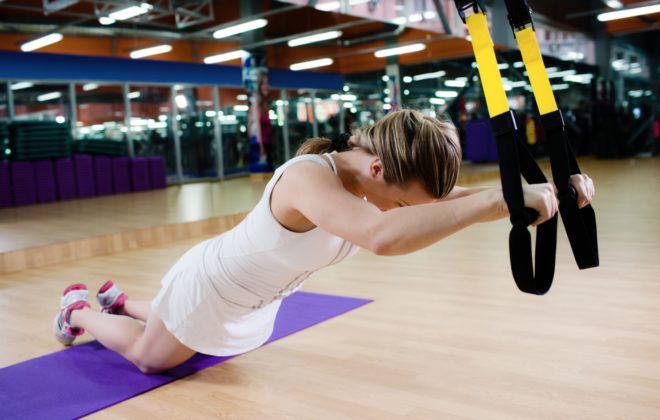Mobility and flexibility – are they different?
As a Pilates instructor I am pleased that in fitness along the usual topics concerning power, strength, reduction of fat tissue, flexibility and mobility are finding their place as well. When talking to clients, students of Fitness college and colleagues we often discuss flexibility, mobility and stability.
Of course, they start to debate whether the flexibility is the same as mobility, whether one is possible without the other and the like. Are we saying that the muscle is mobile or flexible? And the wrist, is the wrist mobile or flexible? To provide a more detailed introduction to the whole issue, the topic of today’s blog are the differences between the two terms.
I am beginning with flexibility because this term in literature was much more used than mobility, and when mobility would be mentioned it would pertain to flexibility.
Flexibility is the ability to reach the maximum amplitude of voluntary movement in one or more joints. It is the ability to have a free movement in the wrist, without limitation. Flexibility depends on the extension of muscle-tendon units that cross over that joint. It’s based on the ability of muscle to relax and surrender to force of stretching.
Trainers need to know that the flexibility is under relatively small genetic influence and in relation to other abilities (e.g. precision, coordination) can develop substantially. That is good and gives us space to “train” flexibility. There are also limiting factors that we need to know. First, it is important to study the structure of a joint because there are joints with a large scope of movement and those with relatively small movement scope and we do not want or can influence it.

When the flexibility is trained, it is necessary to warm up well because heat stimulates blood flow, reduces muscle stiffness and increases nerve impulse transmission. We need to keep an eye on the rhythm of breathing allowing for relaxation and reduced muscle tension. In stretching it is important to maintain the proper position to avoid compensation. And something else very important: not all tensed muscles should be stretched! You need to know when to stretch and when to strengthen. Certain muscles are excessively stretched and should be strengthened (eccentric stress of the muscles), and hypertonic should be strained.
In the literature we find many methods for the development of flexibility, but generally everything is reduced to: static and dynamic stretching and PNF (proprioceptive neuromuscular facilitation).
Static stretching is achieving maximum movement amplitude using slow and controlled movements with retention of the position. We can run it on our own, so we’re talking about an active stretching which is safer because we are controlling the stretching force. We use passive stretching when we need increased flexibility (e.g. gymnastics) and when the active movement causes pain. The therapist, the trainer, handles and guides a part of the body during stretching to achieve a new range of motion (ROM). This stretching requires good coaching and client communication because there is a danger of the muscle being overstretched.
Dynamic stretching implies achieving maximum movement amplitude with dynamic, repetitive, relatively sudden movements. It is derived from various sports that have such movement patterns, e.g. karate, Sport Gymnastics… This stretching should be carried out cautiously because there is a risk of injury (muscle tear or joint injury). I will mention a ballistic stretching which is a type of dynamic stretching and a rather controversial method. Baeulieu has shown in 1981 that ballistic stretching allows achieving a 2 times higher force of tensed muscle than static stretching and strong muscle stretching reflex is activated.
Which technique is more efficient? If you are working with recreational athletes, it is recommended that you use static stretching, but if you are working with athletes who make swings with different extremities in their sport, the dynamic stretching is achieved by higher amplitude of movement, albeit being riskier.
PNF – Proprioceptive neuromuscular facilitation, newer techniques that are performed passively (with the help of a trainer, a therapist) or while client is actively doing the movement, is only assisted by a therapist. The techniques are based on the model of reciprocal innervation, autogenic inhibition and post-isometric relaxation techniques (PIR). There are different types of stretching but usually used are HR (Hold-Relax) and CR (Contract-relax).

Mobility is defined as the ability of the structures or parts of the body to move or to be moved in a functional range of movement (ROM). It depends on the extensibility of soft tissues, joint capsule structure, neuromuscular endurance and strength. Mobility is associated with flexibility, strength, balance and coordination. Thus, for mobility we need flexibility, but if a person does not have the necessary strength, neither is coordinated or has sufficiently developed balance, she will not be able to properly execute that movement. It will not be functional.
With the concept of mobility, we also bind the concepts of hypomobility and hypermobility. Hypomobility (limited mobility) occurs due to adaptive shortening of soft tissues due to e.g. prolonged immobilization, postural disturbances or tissue trauma… Hypermobility (excessive extensibility in ROM) we need in some sports, e.g. gymnastics.
The term that we often hear when talking about mobility is stability. So, if mobility is associated with movement, stability is associated with control. These two are in articles often set as the opposites. But that is not really the case. In contrast, they are complementing. When mobility and stability are not optimal the athlete develops bad biomechanical habits that restrict development of motor and functional capabilities and the adoption of motor knowledge. The appearance of unnecessary, compensational movements additionally increases the chances of unwanted exercise performance and injury. A prerequisite that the injury does not occur is a good posture, equally developed strength and flexibility (no major differences between the left and right sides of the body and a good ratio between the front and back of the body) and sufficiently developed balance.
Thanks to Gray Cook and Lee Burton we can test it. In 1995 Gray and Lee designed the FMS (Functional movement System) – seven tests used to diagnose limitations in mobility and stability, various asymmetries…
To conclude: Flexibility and mobility are not the same.
Flexibility is the ability to move freely in the wrist without limitation. A flexible person can, but does not necessarily have the appropriate trunk strength, balance or coordination to perform some functional movement.
A person with good mobility can do all functional patterns of movement (e.g. squat) without any limitations in a full range of movement (ROM) because besides flexibility she has sufficiently developed trunk strength, coordination and balance.
In other words, flexibility alone is not enough to perform a functional movement, or what famous Croatian band ˝TBF˝ would say… ˝if the wings were enough to get into the air, both chickens and penguins would fly…˝
References:
1. Cook, (2010). Movement, FMS: Screening, assessment and Corrective Strategies
2. Kendall, F.P. i suradnici (2005). Muscles testing and function with posture and pain
3. Lippert, (2006). Clinical kinesiology and anatomy
4. McAtee, Charland (2007). Facilitated stretching
5. Kisner, Carol and Colby, Lynn Allen (2007). Therapeutic Exercise – Foundations and Techniques
6. Paušić, (2013). Kineziterapija koštano-mišićnog sustava (priručnik)
7. Sekulić, Metikoš (2007). Osnove transformacijskih postupaka u kineziterapiji





